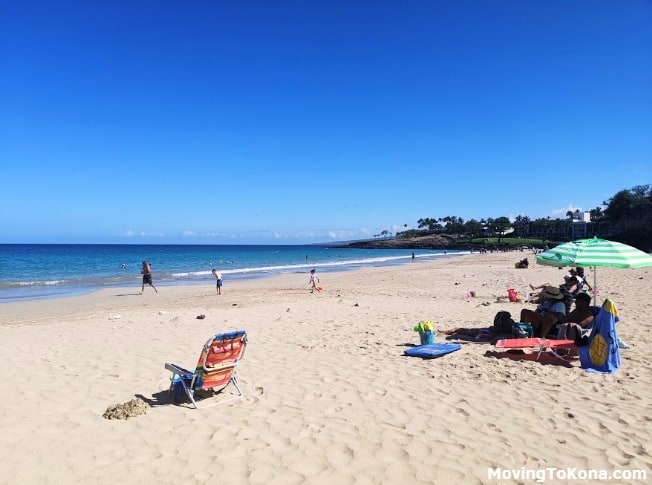Are the Beaches in Hawaii Imported?

What Makes the Beaches on Hawaii so Special?
The beaches on Hawaii are truly special and unique due to their large variety of beautiful and exotic compositions. The Hawaiian islands are of volcanic origin, composed of carbonate shells from marine organisms, as well as crushed coral and shells from the large coral reef that surrounds the islands. The white sand beaches consist mainly of calcareous reef-derived material and one of the most notable examples is Waimanalo Beach on Oahu. Meanwhile, the black sand beaches, such as Waianapanapa on Maui, are formed by two main processes, mechanical erosion and bioerosion. The latter is mainly caused by the parrotfish, which grind up coral rock and ingest it, then excrete it as sand. With such an abundance of natural beauty, it’s no wonder why the beaches on Hawaii are so special.

How is Sand Created and Transported?
Sand is created by a process known as weathering, when rock is broken down by wind, water, and ice into smaller and smaller pieces. Over time, these pieces are transported by wind, water, and ice to other areas.
Wind is one of the most powerful forces in transporting sand. Wind carries sand from areas of higher elevation, such as deserts, and deposits it in areas of lower elevation. This is especially true during storms, when sand and other sediment is picked up by wind and carried to other locations.
Water is also an important agent in transporting sand. Water carries sand from the shoreline to other locations. The current of a river, ocean, or lake can carry sand from one area to another. Additionally, waves can crash against a shoreline and carry sand to other areas.
Ice is another powerful force for transporting sand. During the winter months, ice can freeze sand and sediment on the ground. As the ice melts, it carries the sand and sediment with it, depositing it in other areas.
In addition to natural means of transporting sand, humans can also move sand from one area to another. This is commonly done in the construction of golf courses and hotels, where sand is imported from other countries, such as Australia, Polynesia, and China.
Where Does the Sand in Hawaii Come From?
The sand in Hawaii is not imported, but rather brought in by natural means. The wind and the waves bring the sand from the shorelines of the islands and deposit it on the beaches. However, sand has been shipped from other places including Australia, Polynesia, and China to be used in the construction of golf courses and the filling of sand traps. The majority of Waikiki’s sand actually comes from just offshore, and the state even spent $500,000 in 2004 to suck 10,000 cubic yards of sand out of the ocean. Despite this, the risk of imported sand harming the environment is still a concern.
How Do they Manage the Sand on Hawaii’s Beaches?
Step 1: The state of Hawaii invests a lot of money and resources into restoring the beaches in Waikiki. Sand is imported to artificially create beaches, and plans are in place to help with water drainage using structures such as the Ala Wai Canal, and seawalls and groins.
Step 2: Beach erosion is monitored, with funds allocated to help alleviate the situation. In 2017, beach erosion worsened with “king tides” along with elevated sea levels, and the mayor of Honolulu proposed using a jackhammer to remove concrete that was creating a backwash and sucking out the sand.
Step 3: Long-term solutions may involve the use of sandbags and groins. Two aging ones were removed in 2012, and this has caused further beach erosion.
Step 4: Sand is also imported from countries such as Australia, Polynesia, and China for use in construction and for sand traps.
Step 5: Finally, locals and visitors are reminded not to remove sand from the beach as it is a sacred resource and considered illegal in the US. Any souvenir sand should be taken with permission.
